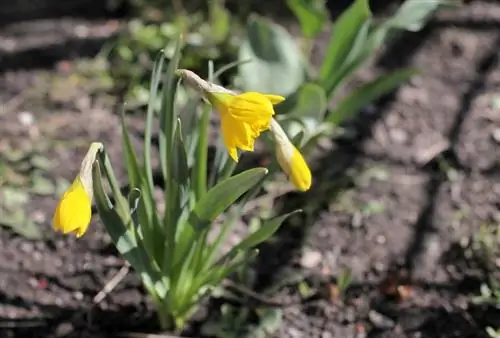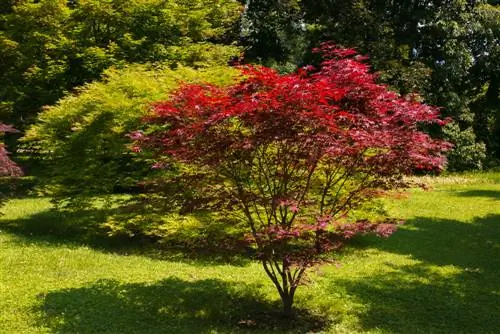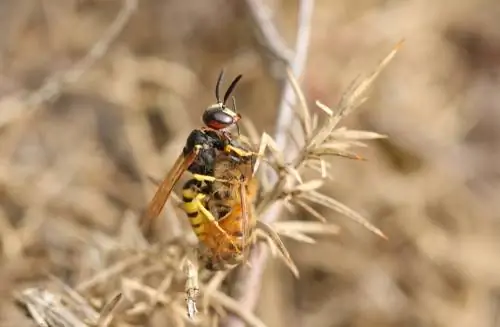- Author admin [email protected].
- Public 2023-12-29 04:51.
- Last modified 2025-06-01 06:02.
If an eye is mentioned in a tree pruning, this term has little in common with the sensory organ of humans and animals. This guide strives to provide a coherent definition that will help home gardeners understand the frequently used term.
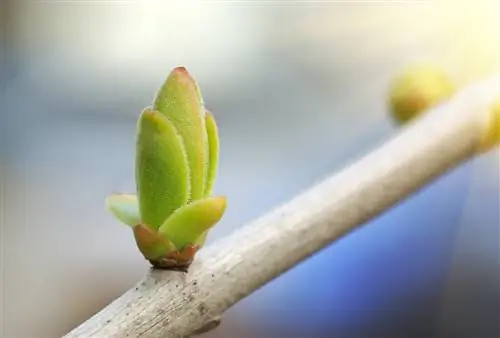
What is an eye in gardening?
In the gardening world, an eye refers to a bud, the growing point on a plant that produces leaves, flowers or shoots. Over the course of the growing season, the decision as to whether an eye develops as a leaf, flower or shoot is influenced by internal and external factors such as plant hormones, light and temperature.
Eye - understandable definition
Eye is a synonym for bud, the growing point on a plant. This is formed in summer and survives the winter to emerge as a leaf, flower or new shoot the following year.
An eye already contains all the plants in miniature format that are required for growth as a leaf, flower or shoot. The embryonic system is protected by bud scale leaves. As a rule, branches on ornamental and fruit trees have a mixture of different types of buds, as shown below using the example of a peach branch.
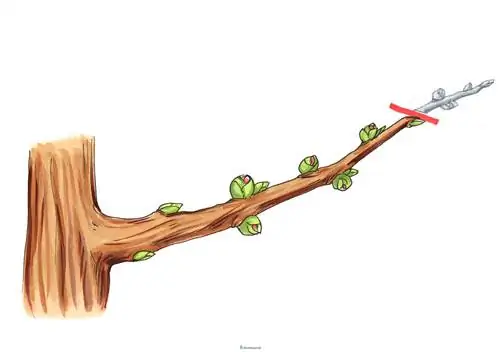
It is only in the middle of the growing season that one can tell whether an eye develops as a leaf or a flower.
Not all eyes pop out
When growth begins in spring, some eyes remain dormant. Gardeners refer to this special form of bud as a sleeping eye. In botanical jargon the term is preventative bud. In contrast to their vital counterparts along the shoot axis, sleeping buds do not swell in spring, but remain tiny and inconspicuous. This situation sometimes does not change for many years. The only job of a sleeping eye is to restore lost plant organs, such as branches or an entire trunk.
Signals for budding - natural or horticultural origin
It is usually only decided over the course of the growing season which task a bud fulfills for the respective plant. In many flowering trees, for example, the establishment of a flower, leaf or shoot bud does not take place until midsummer. The fascinating process is controlled by internal and external influencing factors. Plant hormones, light and temperature conditions give an eye the signal to sprout.
From a gardening perspective, you can also influence the sprouting of an eye. This is done using scissors (€14.00 on Amazon) or a saw as part of a pruning operation. If you shorten a branch to just above an eye, growth will begin at this point. As the illustration below shows, the correct distance to the bud is important for the initial spark to sprout to be successful.

An eye sprouts vitally when the cut is 3 to 5 millimeters above one eye.
Tip
Gardeners call the distance between two eyes along a shoot axis the internode. From the distance between two buds you can draw conclusions about the importance of a shoot for the plant. Unwanted wild shoots on a refined shrub or tree are revealed by the noticeable large gaps between the leaf buds.


